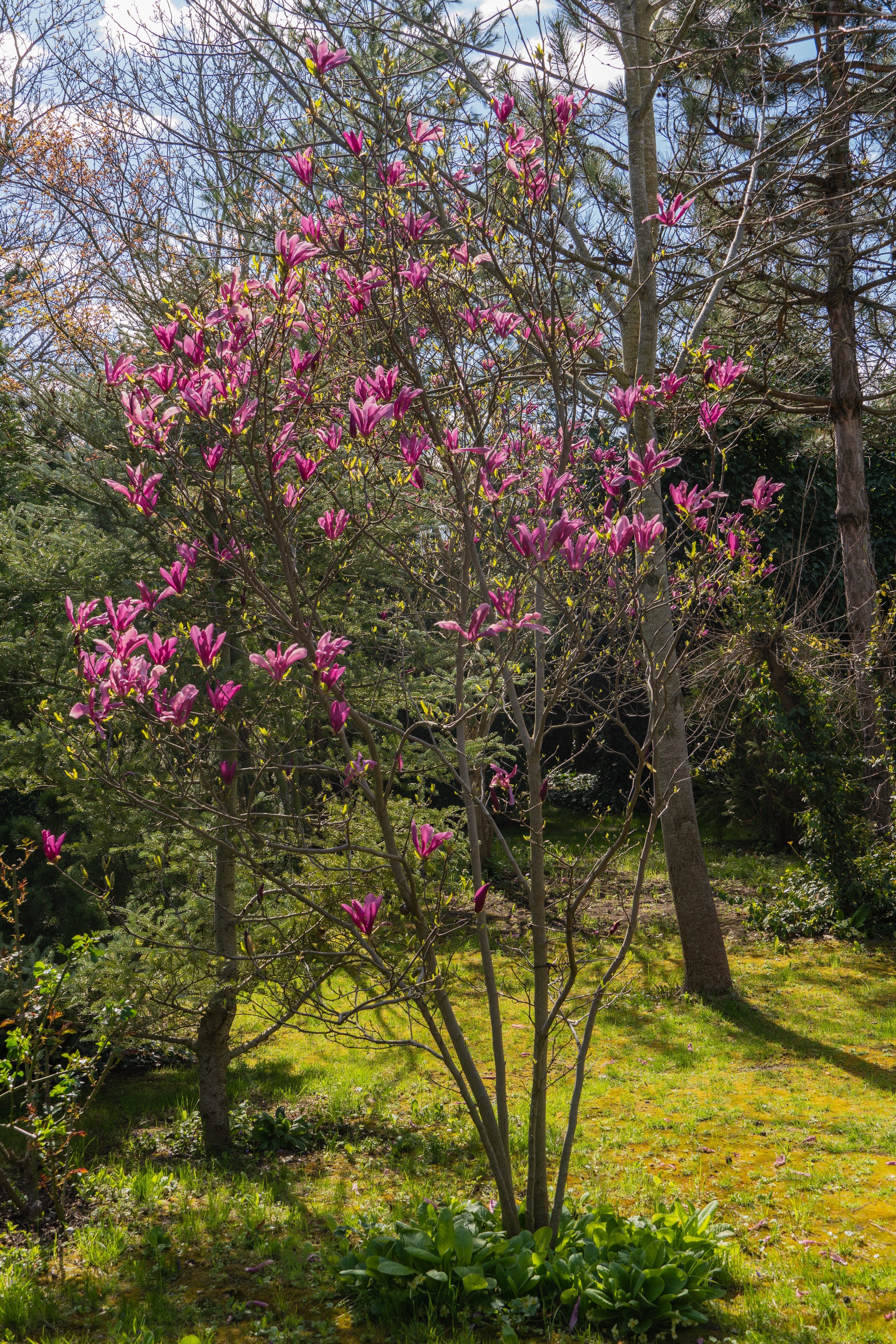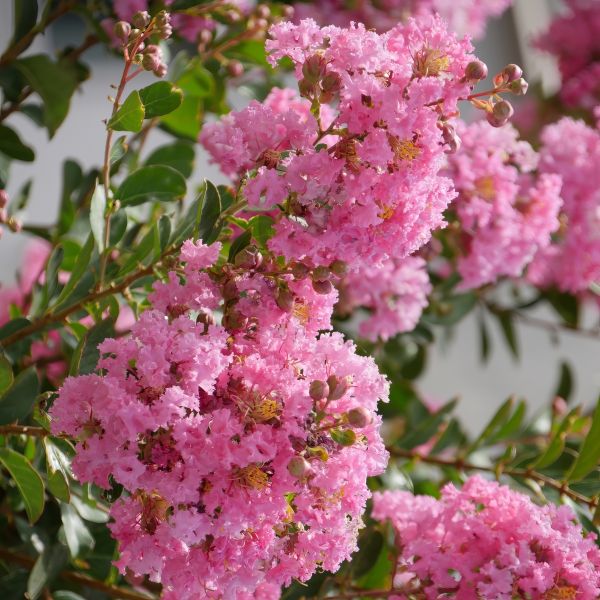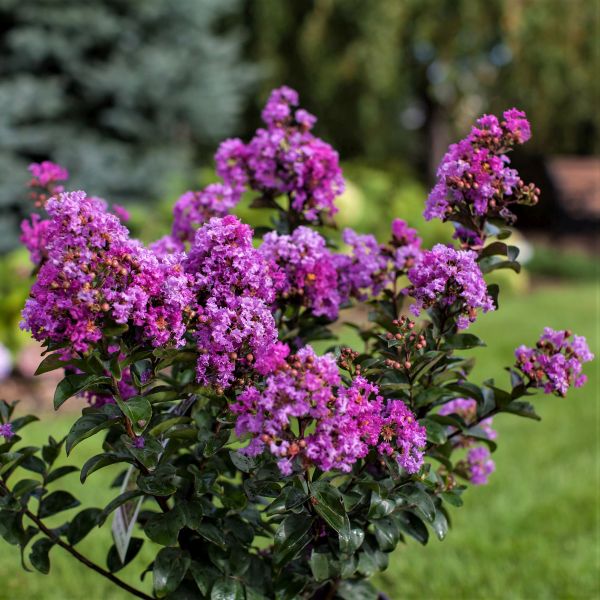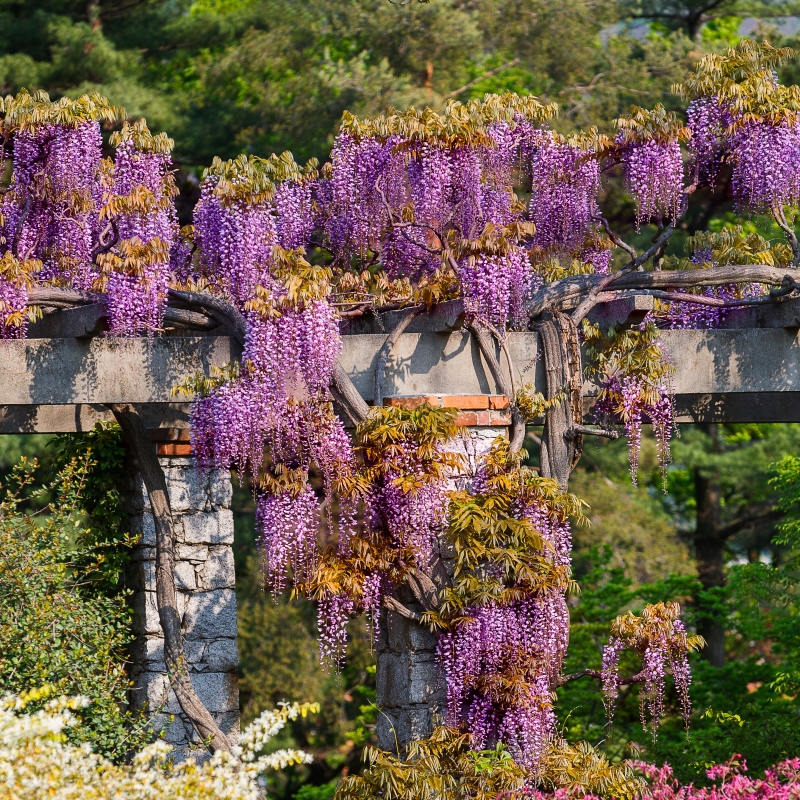


D.D. Blanchard Southern Magnolia
Magnolia grandiflora 'D.D. Blanchard'
90 reviews
D.D. Blanchard Southern Magnolia
Magnolia grandiflora 'D.D. Blanchard'
90 reviews
2.5 Gallon Tree Form
We are sorry, product is currently out of stock due to seasonal availability. Please check the "Related plants available in your area" section below
Not just beautiful - intentionally selected by ShrubHub's 3D landscape design team to fit real-world spaces and maximize yard potential.
Why D.D. Blanchard Southern Magnolia?
The D.D. Blanchard Southern Magnolia is a stunning evergreen tree with a dense, pyramidal canopy and glossy green leaves that have a chestnut brown underside. Its large, fragrant white flowers bloom in summer and are followed by conspicuous cones of red seeds. This cultivar is tolerant of a wide range of soil types and climates and is ideal for use as a shade or specimen tree in landscapes or gardens.
Related plants available in your area
Sunlight
The D.D. Blanchard Southern Magnolia requires full sun to partial shade, meaning it should be exposed to at least 6 hours of direct sunlight per day but can tolerate some shade as well.
Watering
The D.D. Blanchard Southern Magnolia typically requires regular watering, especially during the first few years of growth. It prefers moist, well-drained soil and benefits from watering deeply to help establish a strong root system.
Fertilizing
The fertilizer requirement for D.D. Blanchard Southern Magnolia is best met by using a slow-release, balanced fertilizer with a ratio of 10-10-10 or similar. This ensures the tree receives essential nutrients without promoting excessive growth or causing n
Looking for a tree that will make a statement in your garden and provide a host of benefits? Look no further than the D.D. Blanchard Southern Magnolia Tree!
With its stunning features, unique benefits, and versatile applications, this tree is a must-have for any landscape enthusiast.
The D.D. Blanchard Southern Magnolia Tree is a fast-growing tree that can reach heights of up to 80 feet or more. Its large, glossy leaves and fragrant white flowers make it a stand out in any garden, and its evergreen foliage ensures year-round beauty.
But the benefits of this tree go beyond its looks. The D.D. Blanchard Southern Magnolia Tree is also a great choice for anyone looking to enjoy the benefits of fresh, clean air. This tree is known for its ability to absorb pollutants from the air, making it a natural air purifier. It is also resistant to pests and diseases, making it a worry-free option for any gardener.
One of the best things about the D.D. Blanchard Southern Magnolia Tree is its ability to thrive in a wide range of growing conditions, from sandy soil to clay soil. It is perfect for enhancing curb appeal, providing shade and privacy, and attracting wildlife, including birds and butterflies.
Whether you're looking to add a touch of elegance to your residential landscape or enhance the beauty of a public park or commercial property, the D.D. Blanchard Southern Magnolia Tree is the perfect choice. It can be used as a specimen tree, a hedge, or a screen, and its versatility makes it a great addition to any outdoor space.
Investing in the D.D. Blanchard Southern Magnolia Tree is a smart choice that will provide years of beauty and benefits. Don't miss out on the opportunity to add this stunning tree to your garden today!
Plant Information:
| Botanical Name: | Magnolia grandiflora 'D.D. Blanchard' |
| USDA Zones: | 7 - 9 |
| Water: | Moderate |
| Exposure: | Full Sun |
| Soil Needs: | Well Drained |
| Mature Height: | 40 - 50 feet |
| Mature Spread: | 25 - 35 feet |




Pollination Info
Pollination Information for D.D. Blanchard Southern Magnolia
The D.D. Blanchard Southern Magnolia (Magnolia grandiflora 'D.D. Blanchard') is a flowering tree that produces large, fragrant, creamy white flowers. In order to produce fruit, the tree needs to be pollinated by insects.
Pollination Mechanisms:
The primary pollinators of the D.D. Blanchard Southern Magnolia are beetles, especially the tulip tree beetle (Agelastica alni), which is attracted to the magnolia's strong scent and large flowers. Bees and other insects also visit the flowers, but they are not as effective at pollinating the tree.
Pollination Requirements:
D.D. Blanchard Southern Magnolia is self-incompatible, which means it requires cross-pollination from another tree in order to produce viable fruit. The tree is also sensitive to cold temperatures and will not produce fruit in regions with harsh winters. Therefore, it is recommended to plant at least two magnolia trees to ensure successful pollination.
Blooming Time:
The D.D. Blanchard Southern Magnolia blooms from late spring to early summer, typically in May or June. The tree produces flowers for several weeks, allowing ample time for pollinators to visit the tree.
Fruit Production:
If successfully pollinated, the D.D. Blanchard Southern Magnolia will produce large and unique fruit that are cone-shaped and contain bright red seeds encased in a bright red pulp. The fruit ripens in late summer to early fall and can be used for decorative purposes or to grow new magnolia trees.
Pollination Tips:
- Plant two magnolia trees to ensure successful cross-pollination
- Select a planting location with plenty of sunlight and well-drained soil
- Avoid planting near buildings or structures that could block pollinators from accessing the tree
- Do not use pesticides or insecticides near the tree during blooming season
FAQ
D.D. Blanchard Southern Magnolia (Magnolia grandiflora 'D.D. Blanchard') FAQ
What is D.D. Blanchard Southern Magnolia?
D.D. Blanchard Southern Magnolia (Magnolia grandiflora 'D.D. Blanchard') is a large, evergreen tree with glossy, leathery leaves and fragrant white flowers that bloom in the summer. It is a cultivar of the Southern Magnolia native to the southeastern United States.
How tall does it grow?
The D.D. Blanchard Southern Magnolia can grow up to 80 feet tall, with a spread of up to 40 feet at maturity.
What are the soil requirements for D.D. Blanchard Southern Magnolia?
The tree prefers well-drained, acidic soils, but can tolerate a wide range of soil conditions. It is important to avoid planting in poorly drained or compacted soils.
How much sunlight does D.D. Blanchard Southern Magnolia require?
The tree thrives in full sun to partial shade. However, it may have reduced flowering in partial shade.
How do I plant D.D. Blanchard Southern Magnolia?
Dig a hole twice as wide as the root ball, but no deeper than the root ball. Place the tree in the hole and backfill with the soil. Make sure the root flare is above the soil surface. Water thoroughly.
How often should I water the tree?
Water the tree regularly during the first growing season to establish a deep, extensive root system. Once established, it is drought-tolerant and does not require regular watering. However, during extended periods of drought, it may require occasional watering.
When does D.D. Blanchard Southern Magnolia bloom?
The tree blooms in the late spring and early summer, producing large, fragrant white flowers.
How do I care for my D.D. Blanchard Southern Magnolia?
Prune the tree in late winter to remove any dead or damaged branches. Fertilize annually in the early spring with a slow-release fertilizer formulated for acid-loving plants. Avoid pruning late in the growing season, as this can stimulate new growth that may not harden off before winter.
Are there any pests or diseases that affect D.D. Blanchard Southern Magnolia?
The tree is relatively pest and disease resistant. However, it is susceptible to scale insects and fungal diseases such as leaf spot and canker in stressful growing conditions.
Planting & Care
Planting & Care for D.D. Blanchard Southern Magnolia
Planting
1. Choose a location for planting that has well-draining soil and receives full sun to partial shade.
2. Dig a hole that is two to three times the width of the root ball and just as deep.
3. Amend the soil with compost or peat moss if necessary.
4. Gently remove the plant from its container and place it in the hole.
5. Backfill the hole with soil and water thoroughly.
Care
1. Water the plant deeply once a week during the growing season, and more frequently during hot, dry weather.
2. Mulch around the base of the plant to retain moisture and suppress weeds.
3. Fertilize in spring with a slow-release fertilizer formulated for trees and shrubs.
4. Prune in late winter or early spring to encourage new growth and maintain a desired shape.
5. Protect from pests and diseases by monitoring the plant regularly and treating as needed.
6. Provide winter protection in colder climates by wrapping the trunk with burlap or covering the plant with a blanket or tarp.
Check Out These Verified Customer Reviews:
Customer Reviews
4.7 out of 5 based on 90 reviews
Thank you! Your review has been submitted.
Smooth website experience, easy to navigate and place order.
Beautiful and healthy tree, arrived in perfect condition.
Received a healthy and robust tree, very happy with it.
Item has been added to your cart.






















